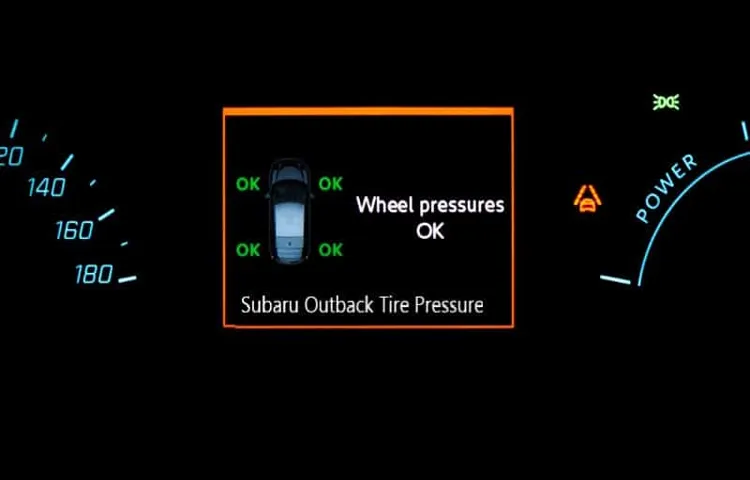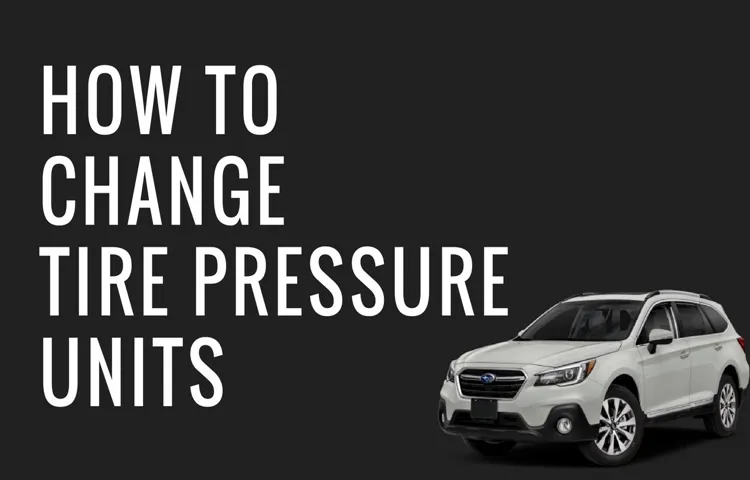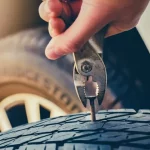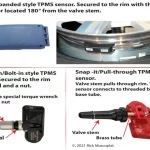When it comes to ensuring a smooth ride and optimal vehicle performance, checking your Subaru Outback tire pressure regularly is crucial. Low tire pressure can result in decreased fuel efficiency, poor handling, and even tire damage, while over-inflated tires can lead to a harsh ride and decreased traction. But with so many factors affecting tire pressure, it can be easy to feel overwhelmed.
How often should you check your tire pressure? What is the optimal PSI for your tires? And how can you ensure accurate readings? In this blog post, we’ll answer these questions and more to help you keep your Subaru Outback running at its best.
Table of Contents
Understanding Tire Pressure
Are you wondering what the correct tire pressure is for your Subaru Outback? It’s important to maintain the correct tire pressure to ensure optimal performance and safety. The recommended tire pressure can vary depending on your specific model and tire size. In general, the correct tire pressure for a Subaru Outback can be found either in the owner’s manual or on a sticker located on the driver’s side door jamb.
It’s important to regularly check your tire pressure and to not overinflate or underinflate your tires. Proper tire pressure can improve gas mileage, extend tire life, and provide better handling and braking. So make sure to always maintain the correct tire pressure for your Subaru Outback.
Importance of correct tire pressure
Tire pressure is one of the most important aspects of vehicle maintenance that is often overlooked by car owners. Understanding the correct tire pressure for your vehicle is crucial for optimal driving performance, safety, and longevity of your tires. It is recommended that you check your tire pressure at least once a month and before a long trip to ensure they are inflated to the manufacturer’s specified pressure.
Keeping your tires properly inflated not only improves your vehicle’s handling but also reduces the risk of accidents due to tire blowouts and hydroplaning. Plus, it can save you money on gas by improving your vehicle’s fuel efficiency. Make it a habit to check your tire pressure regularly to keep yourself and others on the road safe.

Recommended tire pressure for Subaru Outback
Subaru Outback owners often wonder what tire pressure they should be using, and it’s an important question to answer. Having the correct tire pressure not only ensures your safety on the road, but it also affects your vehicle’s performance and fuel economy. The recommended tire pressure for the Subaru Outback can vary slightly depending on the model year and tire size, but generally falls between 32-35 psi for both front and rear tires.
It’s important to check your tire pressure regularly, especially when the weather changes, as temperature fluctuations can affect your tire pressure. Remember, overinflated or underinflated tires can cause uneven wear and damage, leading to expensive repairs down the road. Keep your Subaru Outback running smoothly by maintaining the proper tire pressure and always consulting your owner’s manual for specific guidelines.
Finding the Correct Tire Pressure
If you’re wondering what the correct tire pressure is for a Subaru Outback, you’re not alone. The recommended tire pressure for this vehicle is typically found in the owner’s manual or on the tire placard located on the driver’s side door frame. The optimal tire pressure usually ranges from 32 to 35 PSI depending on the type of tire.
Properly inflated tires provide several benefits such as better fuel economy, improved handling, and longer tire life. On the other hand, overinflated or underinflated tires can lead to safety issues, decreased fuel efficiency, and premature wear and tear on the tires. It’s always a good idea to check your tire pressure regularly, especially before a long trip or when there are significant temperature changes.
Taking proper care of your tires can keep you safe on the road and save you money in the long run.
Check the owner’s manual
When it comes to finding the correct tire pressure for your vehicle, the owner’s manual is your best friend. This manual will provide you with all the necessary information to ensure that your tires are inflated to the proper pressure. It’s important to note that different vehicles require different tire pressures, so what works for your friend’s car may not be right for yours.
Checking the owner’s manual is a simple yet effective way to avoid over or under-inflating your tires, which can cause issues with handling, fuel economy, and overall safety. So, the next time you’re unsure about the correct tire pressure for your vehicle, reach for your owner’s manual and take the guesswork out of tire maintenance.
Check the tire pressure label on the driver’s side door jamb
When it comes to maintaining your vehicle, checking the tire pressure is an essential task. It not only ensures better fuel efficiency but also keeps you safe on the road. So, where can you find the correct tire pressure for your car? Well, the answer lies in the driver’s side door jamb.
Every vehicle has a tire pressure label on the door jamb that specifies the recommended pressure for the front and rear tires. This label is designed to give you precise information for your particular make and model of the car. Running on the wrong tire pressure can lead to uneven tread wear and imbalance, which can decrease the lifespan of your tires.
Therefore, it is crucial to check the tire pressure regularly and maintain the recommended pressure to ensure the longevity of your tires as well as the safety of you and your passengers on the road.
Using a tire pressure gauge to measure the pressure
If you want to ensure that your vehicle is safe to drive on the road, you need to find the correct tire pressure. One of the best ways to do this is by using a tire pressure gauge. These nifty little tools allow you to measure the pressure inside your tires quickly and easily, giving you an accurate reading in just a few seconds.
To use a tire pressure gauge, simply remove the valve cap from your tire, press the gauge onto the valve stem, and wait for the pressure reading to appear. It’s important to make sure that the gauge is properly aligned with the valve stem, as a misalignment can cause an inaccurate reading. Once you have your reading, simply compare it to the recommended tire pressure for your vehicle, which can usually be found in your owner’s manual or on a sticker located inside the driver’s side door jamb.
To maintain optimal safety and performance on the road, make sure to check your tire pressure regularly and adjust it as needed.
Maintaining the Correct Tire Pressure
If you own a Subaru Outback, it’s important to know the correct tire pressure in order to ensure optimal performance and safety. The recommended tire pressure for a Subaru Outback can differ depending on the model and year, but a general guideline is to maintain a pressure between 32 and 35 PSI (pounds per square inch). This information can usually be found in the owner’s manual or on a sticker located on the driver’s side door jamb.
Driving with underinflated or overinflated tires can lead to decreased fuel efficiency, uneven tread wear, and even a blowout while driving. It’s recommended to check your tire pressure at least once a month, preferably when your tires are cold, and adjust accordingly. By maintaining the correct tire pressure, you can prolong the life of your tires and drive safely on the road.
Checking tire pressure regularly
Maintaining the correct tire pressure is crucial for a smooth and safe driving experience. Checking tire pressure regularly is essential because it can greatly affect the performance of your car. Low tire pressure can cause your tires to wear out faster, reduce fuel efficiency, and even make your vehicle harder to handle.
On the other hand, having too much tire pressure can also harm your vehicle’s performance as it can reduce traction and make your car less stable while driving. Therefore, it is recommended to check your tire pressure at least once a month and before long trips. Don’t forget to inspect the spare tire too as it should also be in good condition.
Maintaining the right tire pressure also helps to ensure your safety on the road and can save you from costly car repairs in the long run. It’s a small but crucial check that can make a big difference.
Adjusting tire pressure when necessary
Maintaining the correct tire pressure is crucial for ensuring your vehicle’s optimal performance and safety. Under-inflated tires can result in increased fuel consumption, reduced handling and stability, and premature tire wear, while over-inflated tires can make your ride harsh and uncomfortable. To avoid these issues, make sure to check your tire pressure regularly and adjust it when necessary.
You can use a tire pressure gauge to check your tire pressure, and consult your vehicle owner’s manual or the label inside the driver’s door to find the recommended tire pressure. Keep in mind that the ideal tire pressure may vary depending on factors such as load and speed, so it’s essential to adjust your tire pressure accordingly. By maintaining the correct tire pressure, you can improve your vehicle’s fuel efficiency, handling, and safety, and extend the life of your tires.
So, make sure to pay attention to your tires and keep them properly inflated, as it could save you money and even your life.
Conclusion
In short, the correct tire pressure for a Subaru Outback is not only important for safety and performance, but it also ensures that your car stays on its A-game. It’s not something you want to overlook, because let’s face it, nobody wants to be driving around on deflated tires like they’re stuck in a 90s grunge band. So, remember to always refer to your car manual or your mechanic and make sure your tire pressure is on point.
Trust us, your Subaru will thank you.”
FAQs
What happens if I inflate my Subaru Outback’s tires above the recommended pressure?
Overinflating your tires can cause uneven wear, reduced traction, and a rougher ride. It can also increase the risk of a blowout.
Can I use the tire pressure listed on the tire sidewall for my Subaru Outback?
No, you should always use the recommended tire pressure listed in your vehicle owner’s manual or on the tire information placard located on the driver’s door jamb.
How often should I check the tire pressure on my Subaru Outback?
You should check the tire pressure at least once a month and before long trips. Changes in temperature can also affect tire pressure, so it’s a good idea to check during seasonal changes.
What is the recommended tire pressure for a loaded Subaru Outback?
Depending on the specific model and year, the recommended tire pressure for a loaded (with passengers and cargo) Subaru Outback can range from 33-36 psi.
Can the tire pressure affect my Subaru Outback’s fuel efficiency?
Yes, poorly inflated tires can reduce fuel efficiency. In fact, it’s estimated that for every 1 psi drop in tire pressure, fuel efficiency can decrease by 0.3%.
Is it safe to drive with low tire pressure on my Subaru Outback?
No, driving with low tire pressure can lead to increased tire wear, blowouts, and reduced handling and braking performance. It’s important to address low tire pressure as soon as possible.
Can overloading my Subaru Outback affect tire pressure?
Yes, carrying too much weight or exceeding the maximum payload can result in increased tire pressure and potentially lead to a blowout. Always check your vehicle’s maximum payload and stay within it.



